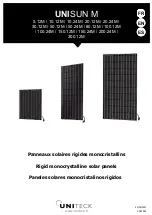
Appendix
11.1 Certificates and guidelines
Panel PC 670 V2/870 V2, Control unit
11-2
Operating Instructions, Edition 03/2004, CD Documentation and Drivers
The following symbols on switch cabinets, module carriers or packaging indicate their
susceptibility to electrostatic discharge:
ESD components are destroyed by voltage and energy far below the limits of human
perception. Such voltage can occur even when components or modules are touched by a
person who is not charged with electrostatic energy. ESD components which were subject to
such voltage are usually not recognized immediately as being defective, because the
malfunction does not occur until after a longer period of operation.
Note
More information is located on the rating label. The rating label is described in the chapter
"Planning use."
Protective measures against electrostatic charging
Most plastics can be charged easily. Therefore, keep plastics away from ESD components!
When working with electrostatically sensitive components, make sure that the person, the
workstation and the packaging are properly grounded. Conduct the electrostaic charge away
from your body by touching the mounting plate for the interfaces, for example.
Handling modules susceptible to electrostatic discharge
As a rule: Only touch ESD components if unavoidable due to necessary tasks.
Only touch the components when the following holds true:
•
You are permanently grounded by means of an ESD armband.
•
You are wearing ESD shoes or ESD shoes grounding protective strips in connection with
ESD floors.
Discharge your body before touching ESD components. Touch a conductive object
immediately beforehand, e.g. a bare metal part of a switch cabinet or the water pipe.
Do not allow chargeable, highly insulated materials, e.g. plastic films, insulating tabletops,
synthetic clothing fibers, to come into contact with ESD components.
Place ESD components only on conductive surfaces (work surfaces with ESD surface,
conductive ESD foam, ESD packing bag, ESD transport container).
Do not expose ESD components to visual display units, monitors or televisions. Maintain a
distance of at least 10 cm to screens.
Handle flat components only by their edges. Do not touch component connectors or
conductors. This prevents charges from reaching and damaging sensitive components.













































